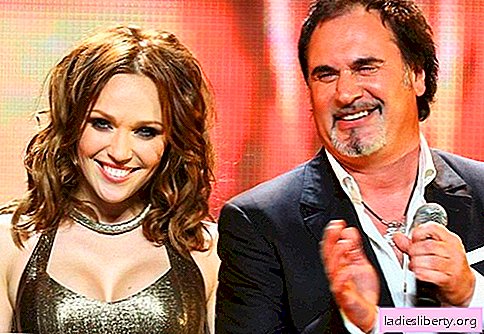
Pain in the lower back is familiar to many, if not everyone: dull pulling or throbbing pains, impaired motor activity.
Sometimes their intensity is so great that a person can neither sit down, nor stand up, nor make movements without assistance.
Pain in the lower back "out of the blue" does not occur, we can talk about relatively harmless neuralgic pathologies (such as inflammation of the sciatic nerve when the lower back is "blown"), or it can be serious diseases of the musculoskeletal system.
It’s not easy to figure out the problem on your own, find its “root”, and how to solve it. What does the patient need to know?
The back is very sore: reasons and what to do. What are the sources of the problem
Intense back pain can be associated with diseases of various systems and organs: musculoskeletal, excretory, etc. In all cases, pain will be one of the first symptoms.
According to medical statistics, most often the lower back is very sore due to problems with the musculoskeletal system (in this case, the question “what to do?” Is especially relevant: pathologies of the spine and its structures often lead to pinching of the nerve roots and intolerable pain). The list of possible reasons is as follows:
• Osteochondrosis of the lumbosacral spine. Osteochondrosis is an “occupational” disease of office workers, but at the same time affects physical workers. The essence of the pathology is the insufficient nutrition of the vertebrae and intervertebral discs. As a result, dystrophic processes begin: the vertebra is slowly destroyed, the disk loses its elasticity and begins to deform. These destructive processes are accompanied by inflammation and pinching of the roots of the nerves. Pain in osteochondrosis pulling, burning. Differ in high intensity. The lesion site may be swollen, slightly reddened.
• Hernias. Disc hernias are accompanied by full or partial bulging of the intervertebral disc. The disk may bulge outward, in which case the symptoms become blurry (and more like the symptoms of osteochondrosis). However, if the disc protrudes into the spinal canal, the problem becomes much more pronounced: the pains become extremely intense, radiate from the buttock along the back of the leg to the foot, and sensory disturbances are observed (up to its complete loss). Perhaps the development of paresis or paralysis. This is a very dangerous pathology that poses a danger to the health of the patient. Invalidation does not occur so often, since there are methods for the treatment of hernias, however, the quality of life is reduced significantly.
• Sciatic nerve inflammation. Also known as sciatica. It can be primary (if "bleeding") and secondary (due to pinching of the sciatic nerve with hernias, etc.). The sciatic nerve is the largest nerve in the body. Therefore, with the slightest effect on it, a huge number of nerve endings are involved, which leads to the development of a strong pain syndrome.
The immediate cause of the pain is denoted by the terms “lumbago” and / or “radiculopathy”. These are not independent diagnoses, but only indications of the cause of the pain: pinching of the nerve roots, displacement of the vertebrae, etc.
If the lower back is very sore, the reasons in this case are obvious for the patient himself, but to answer the question "what to do?" not easy even for a doctor. Treatment of pathologies of the musculoskeletal system, the process is complex and lengthy, and pain is relieved severely.
Often, lower back pain is accompanied by diseases of the internal organs:
• Renal colic. It is common. Urolithiasis, pyelonephritis, etc. are accompanied by intense lower back pain. Their localization is not obvious.
• Hemorrhoids. In this case, the pains are reflected.
• Pancreatitis. In some cases, it is characterized by girdle pain.
Other causes are extremely rare:
• Intestinal tumors. The pain can be given to the lower back, but more often with oncology of the intestine there is either no pain at all, or they are localized in the abdomen.
• Uterine lesions. Polyps, tumors, inflammatory lesions of the uterus can cause lower back pain.
The lower back is very sore: reasons and what to do. Diagnostics
Trying to determine the cause of the pain yourself is like guessing on the coffee grounds. Without special research, this will not be possible. Assigning a diagnosis to yourself will result in the loss of valuable time. Therefore, with persisting pain, it is recommended to consult a specialist. Who will help in such a difficult matter?
• The surgeon.
• Therapist.
• Orthopedist - specializes in diseases of the musculoskeletal system.
• Neurologist. Together with the orthopedist, he is involved in the treatment of the above pathologies: the disease affects not only the musculoskeletal system, but also entails the development of neurological symptoms.
• Neurosurgeon. Spinal neurosurgeons deal with the practical issues of eliminating spinal pathologies.
• Nephrologist. If kidney problems are found, you should contact a nephrologist.
• Urologist. Together with a nephrologist, he treats pathologies of the excretory system. Often specialists nephrologist and urologist are combined in one person.
• Gynecologist.
The list is great. But you should not be afraid of so many doctors. First of all, you should consult a therapist. He will conduct an initial examination, give directions for analysis. Based on the results, assumptions can be made and the patient referred to a specialist.
The diagnostic strategy for lower back pain is generally standard:
• Oral survey. Also called history taking. Practiced by all doctors to compile the initial clinical picture.
• Inspection. Visual assessment of the affected area. In many diseases, the lower back swells, which can be detected during examination and suggests the pathology of the spine.
• Palpation. It is practiced to assess the condition of the spine and surrounding muscles (in case of diseases of the spine muscle hypertonicity is observed). In addition, palpation is used to assess the condition of the kidneys (although the technique of such palpation is complicated).
• Functional tests. To determine the mobility of the spine, limbs, foot sensitivity, tendon reflex, etc. They are carried out by a neurologist during a routine examination (the notorious neurological hammer is familiar to everyone).
• Radiography. X-ray examination is used to assess the condition of the vertebrae.
• MRI / CT. The most informative research. They make it possible to obtain detailed images of all structures of the spine.
• Ultrasound. Ultrasound is prescribed to assess the condition of internal organs.
• Laboratory tests: general blood count, urinalysis, blood biochemistry.
The back is very sore: reasons and what to do. First aid
First aid for intense lower back pain comes down to a temporary relief of pain. It is impossible to independently solve the initial problem; medical assistance is needed. Therefore, you should start from a simple rule: after removing the pain you need to plan a visit to the doctor.
How you can help yourself:
• The pain is caused by inflammation, so let's take an anti-inflammatory drug: Ketorol, Nise, Ibprofen. However, it should not be abused.
• In combination with anti-inflammatory, a single administration of an analgesic is recommended: Baralgin, Analgin, etc.
• Antispasmodic. If there is reason to assume pain caused by pathologies of the internal organs, an antispasmodic will be the best option. No-shpa, Duspatalin, Drotaverin, etc.
In no case should you put ice on a sore spot or try to warm it up. This can lead to unpredictable consequences that are dangerous for both health and life. If, after the measures taken, the pain has not abated and / or intensified, you cannot postpone seeking medical help, you should go to the clinic yourself or call an ambulance.
Very low back pain: causes and treatment
The treatment of pathologies that cause back pain is complex and lengthy. The set of measures includes both conservative therapy (medication, physiotherapy, exercise therapy), and possible surgical intervention.
Modern treatment for back pain has long gone from the simple elimination of discomfort. It is important to treat not the manifestations, but their cause. An example of such an integrated approach is the addition of NSAIDs with neurotropic vitamins (B1, B6, B12). B vitamins not only help to eliminate pain faster than when taking only NSAIDs (for example, diclofenac sodium), but also have a beneficial effect on physiological processes in the nerve fiber stimulate nutrition and restoration of the structure of nerve tissue.
So, the optimal complement to NSAIDs is Neuromultivit in injections, which includes three vitamins B1, B6, B12 in therapeutic dosages. The use of neurotropic vitamins in high therapeutic doses allows you to consolidate the analgesic effect, helps to restore nerve fiber, which helps to achieve long-term remission of the pain syndrome. They begin treatment with daily injections for 5-10 days, then switch to maintenance administration, 2-3 injections per week for two to three weeks.
Also, in a complex or individually, the following groups of remedies are used:
• Anti-inflammatory.
• Analgesics.
• Chondroprotectors (contributing to the restoration of cartilage).
Sometimes the pain can be so intense that they can not be removed. In this case, they resort to blockades with novocaine or lidocaine.
With diseases of the internal organs, antispasmodics are prescribed.
Physiotherapy is diverse. The specific names of the procedures are determined by the physiotherapist based on the disease and its severity. Therapeutic exercise is prescribed for pathologies of the spine, but only when the acute period has passed. Exercise therapy is indispensable as a rehabilitation measure, but during treatment it is strictly contraindicated.
Surgical treatment is resorted to in exceptional cases.. The operation can be either "traditional" (to remove a hernia, neoplasm), or minimally invasive (using a puncture and a laser, an endoscope, etc.). Surgical treatment is the last resort. This is important to keep in mind when talking to your doctor. In Russian medical practice, incompetent doctors, at the first glance at a patient with a hernia, recommend surgical treatment. This is not true at the root. This recommendation is related to the desire to "get rid" of the patient and indicates a low qualification of the doctor.
When the lower back hurts and the cause is determined, the answer to the question "what to do?" clear - to treat. The duration of treatment depends on the pathology. Osteochondrosis and hernias are treated for a long time, from 3 months to a year or more. The duration of treatment for other diseases is less.
Thus, lower back pain does not bode well for the patient: at best, they are associated with inflammation of the muscles or sciatic nerve, at worst, with pathologies of the musculoskeletal system. It is impossible to independently determine the source of the problem, and even more so to eliminate it. You need to see a doctor. Fortunately, the treatment of most diseases has already been worked out, so with a fair share of responsibility and perseverance on the part of the patient, very soon you can forget about the problem.











